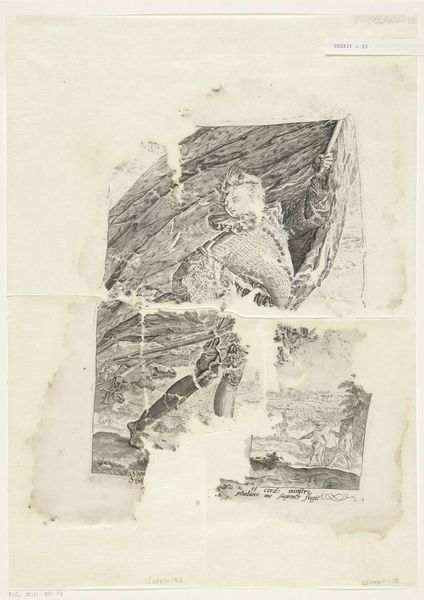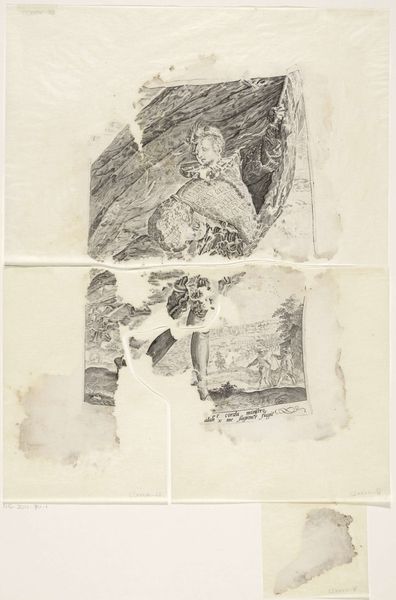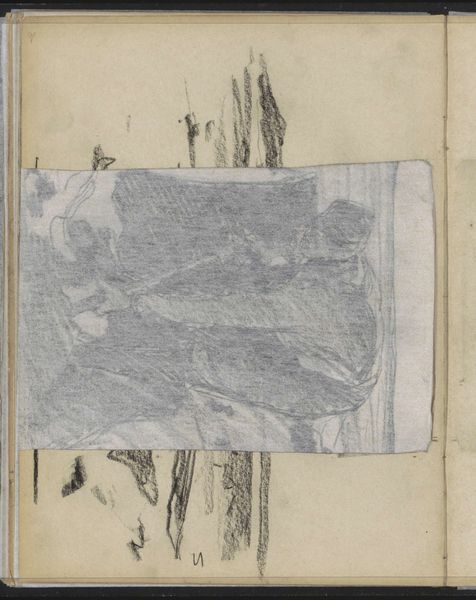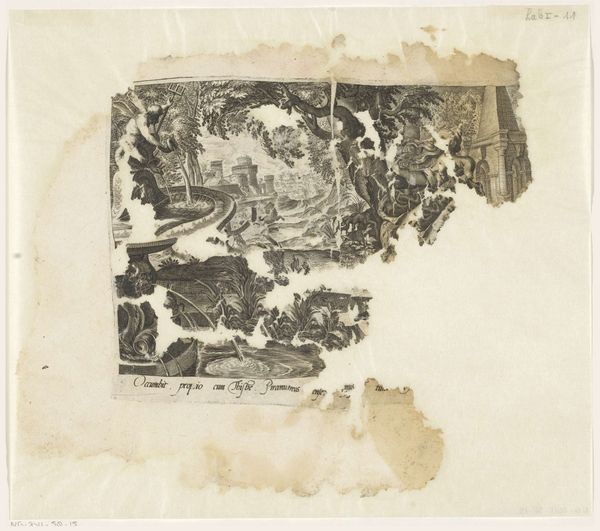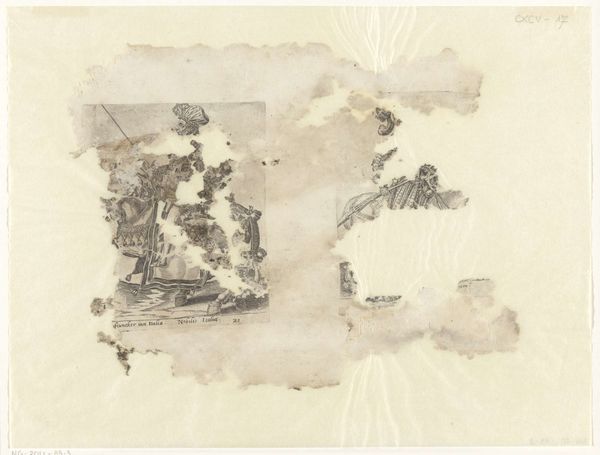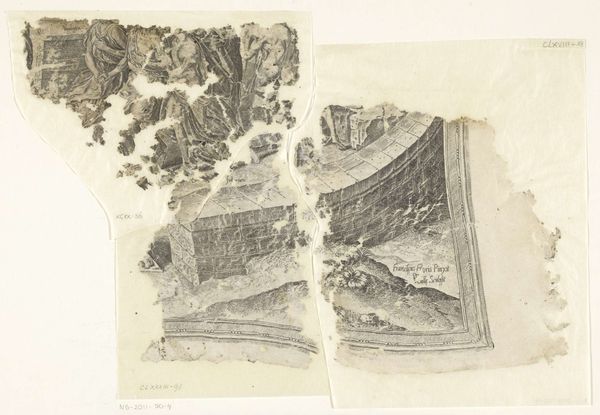
Rechteronderhoek van een prent van het tafereel van Cebes 1561 - 1596
0:00
0:00
drawing, print, ink, engraving
#
drawing
# print
#
perspective
#
figuration
#
11_renaissance
#
ink
#
line
#
history-painting
#
engraving
Dimensions: height 294 mm, width 391 mm
Copyright: Rijks Museum: Open Domain
Curator: Here we have a fragmented engraving from the late 16th century, attributed to Philips Galle, titled "Rechteronderhoek van een prent van het tafereel van Cebes." It's an ink drawing printed with engraving techniques. Editor: Well, immediately, its incompleteness makes me feel a sense of loss, of a story abruptly cut short. The surviving linear precision, though, suggests great intentionality. Curator: Precisely. Note how the lines, particularly in the architectural elements, create a clear perspectival space, despite the damage. We can see a deliberate staging of figures within a defined structure. Editor: I’m drawn to the figures themselves. Their gestures, even in this damaged state, suggest a narrative, perhaps even a moral allegory, that goes beyond mere representation. I suspect this Cebes was quite significant at the time, now almost entirely forgotten. Curator: It's fascinating how even this fragment allows us to decode its semiotic intentions through line quality and layout. Galle masterfully used varying line weights to indicate depth and importance, creating visual relationships between figures and space. Editor: I imagine these figures embody philosophical ideas or psychological states for its original audience. The gestures and positioning probably served as visual cues for something deeper, something archetypal maybe? What do you make of the prevalence of stone structures in this image? Curator: I believe these were deployed strategically, both for symbolic import as architectural masses defining space, but as geometric forms creating balance across the visual field. We see this careful orchestration throughout Galle's surviving engravings. Editor: Looking at how people appear and relate to each other can reveal collective values, hopes, and fears that persisted over time. The details embedded in each element show some aspect of historical visual culture as memory frozen in this ink-based artwork. Curator: So while the fragment offers a sense of loss, as you aptly noted, it paradoxically offers much that we can appreciate as we decode visual artifice from this long ago era. Editor: Yes, in this Cebes' corner we discern long forgotten traditions; and hopefully in understanding this better, the dialogue may continue.
Comments
No comments
Be the first to comment and join the conversation on the ultimate creative platform.






